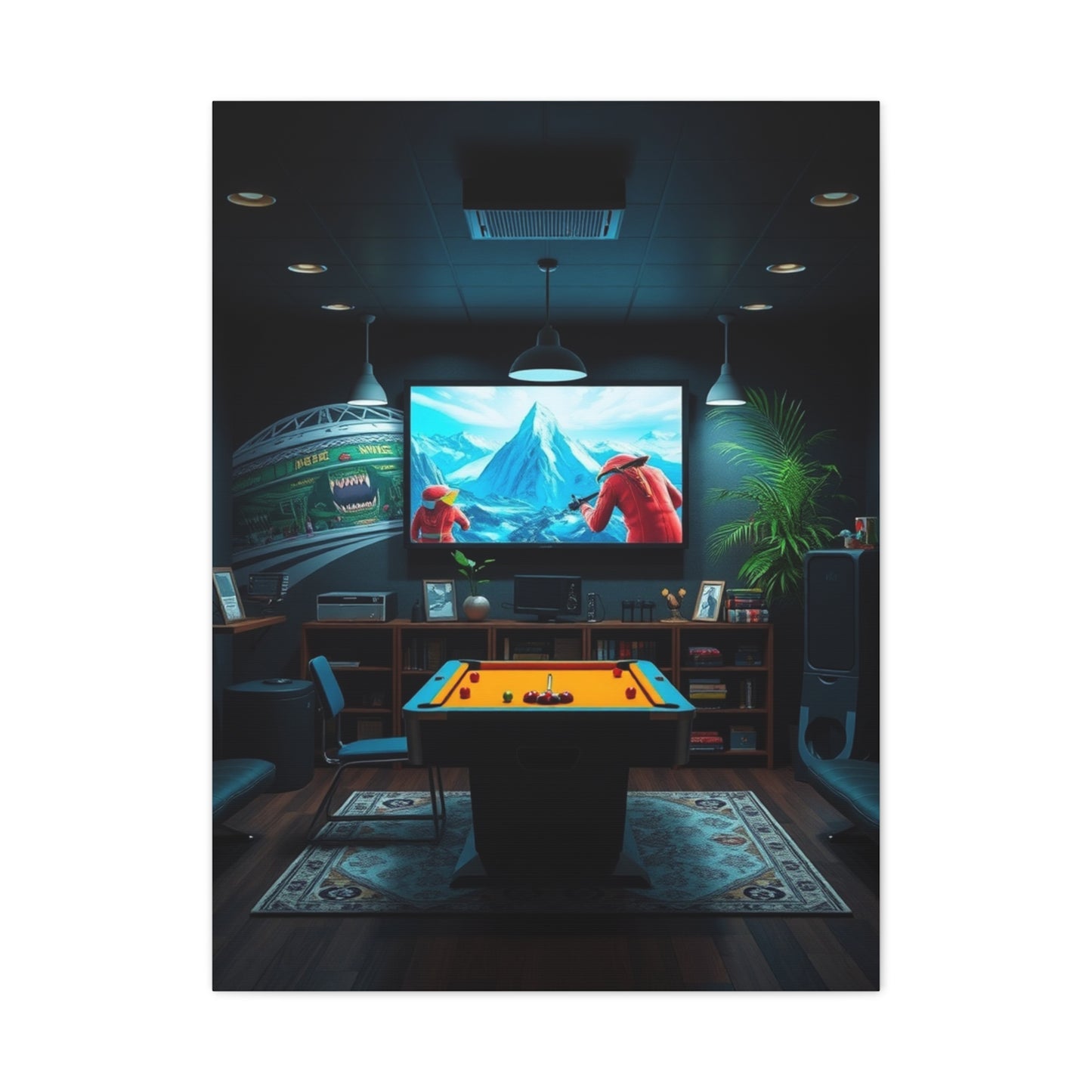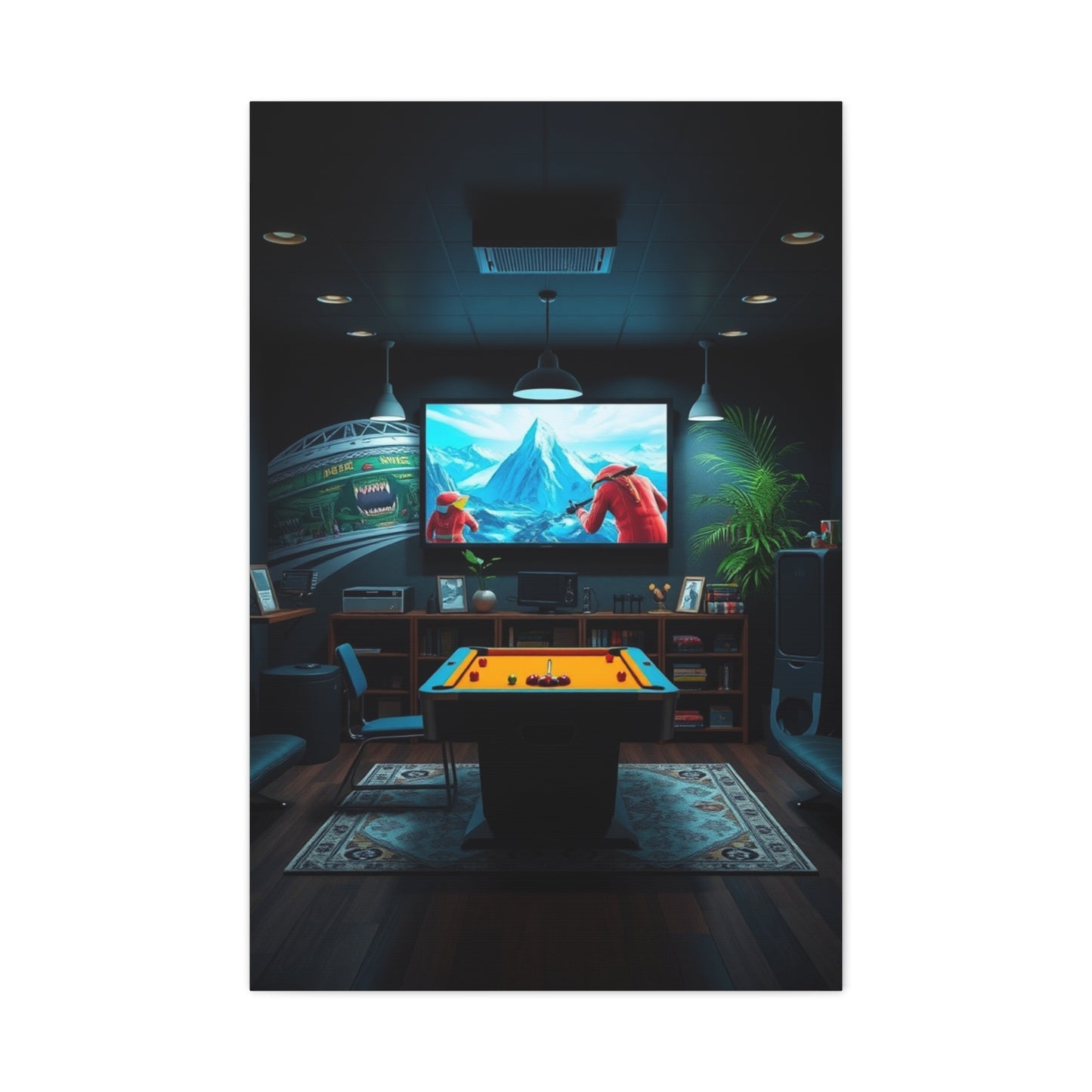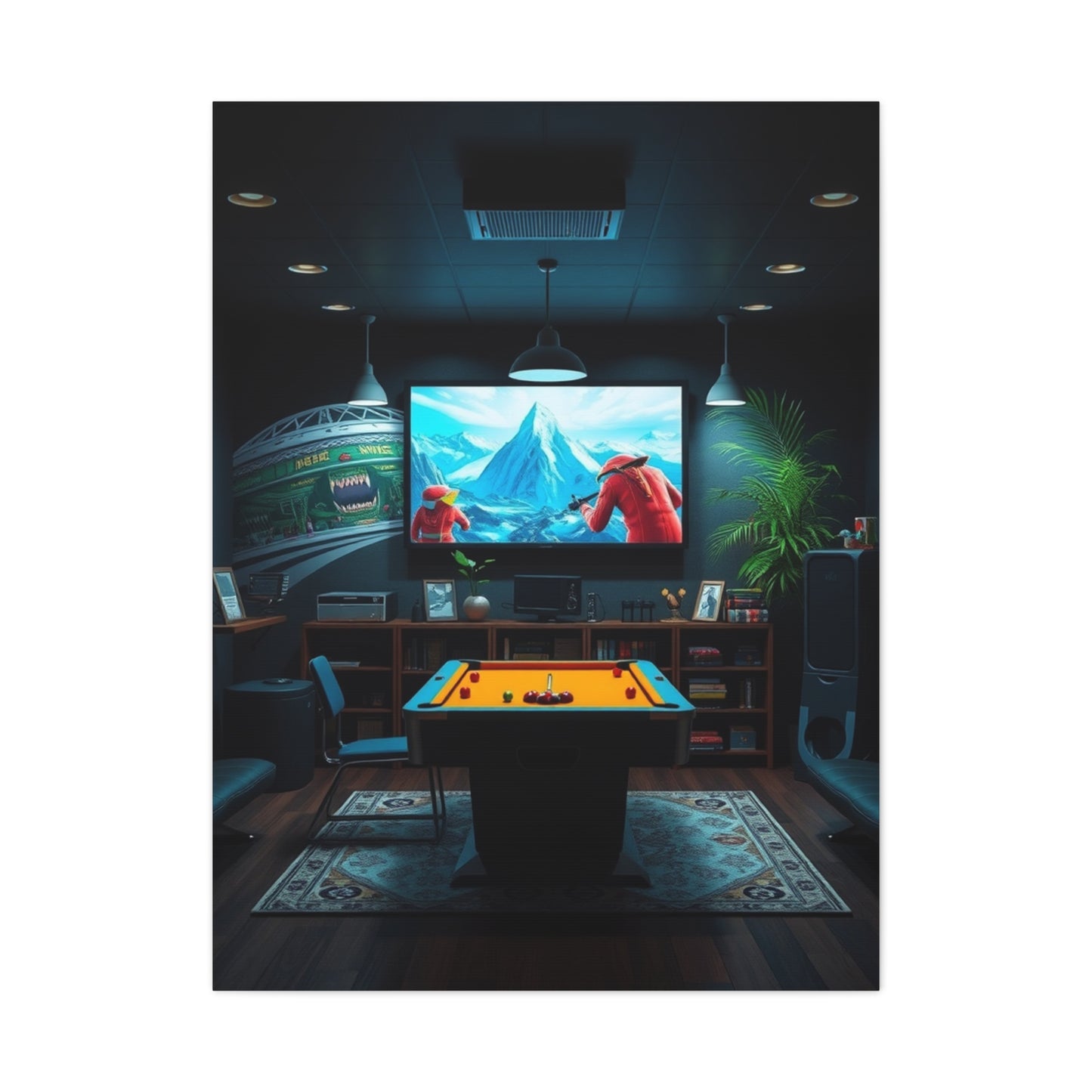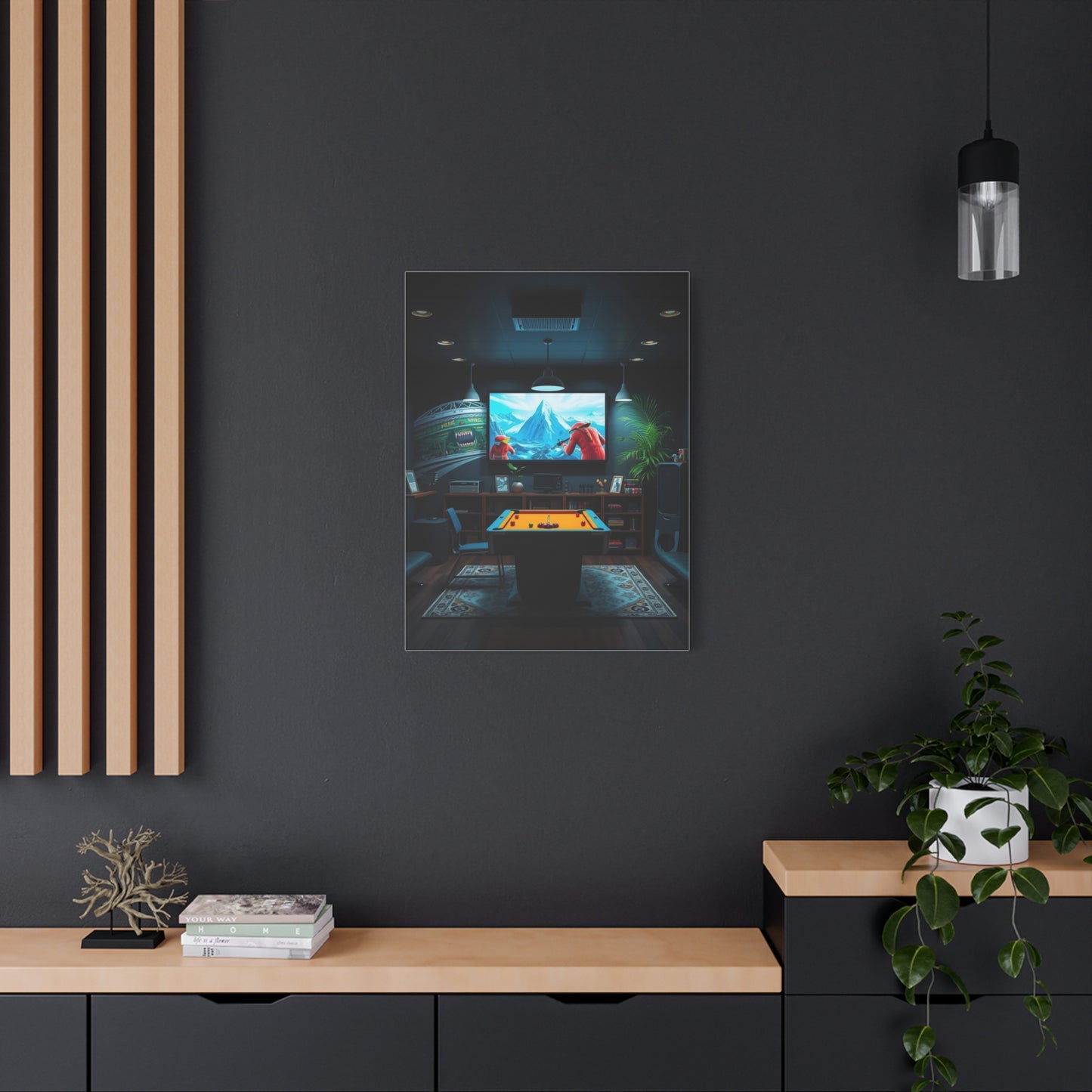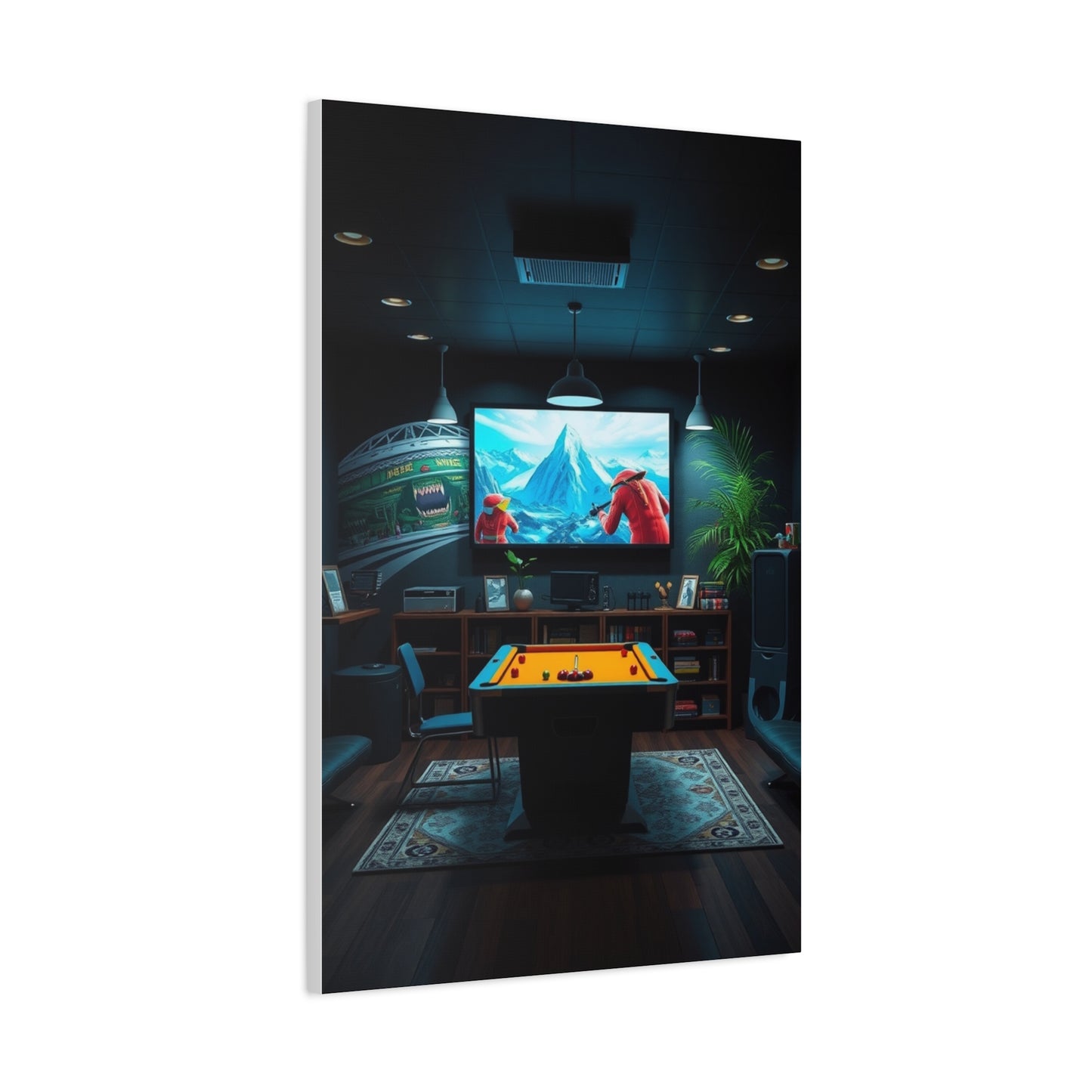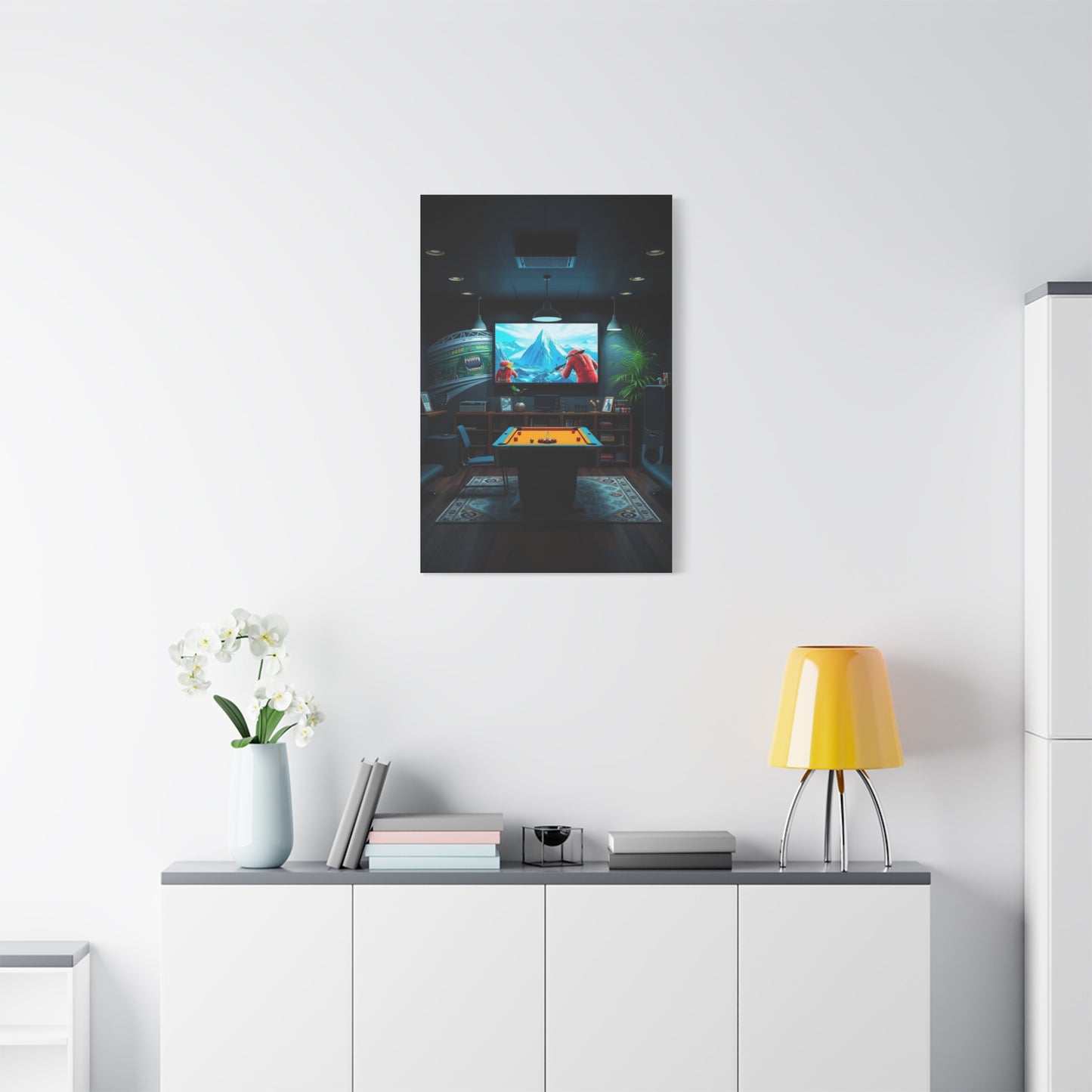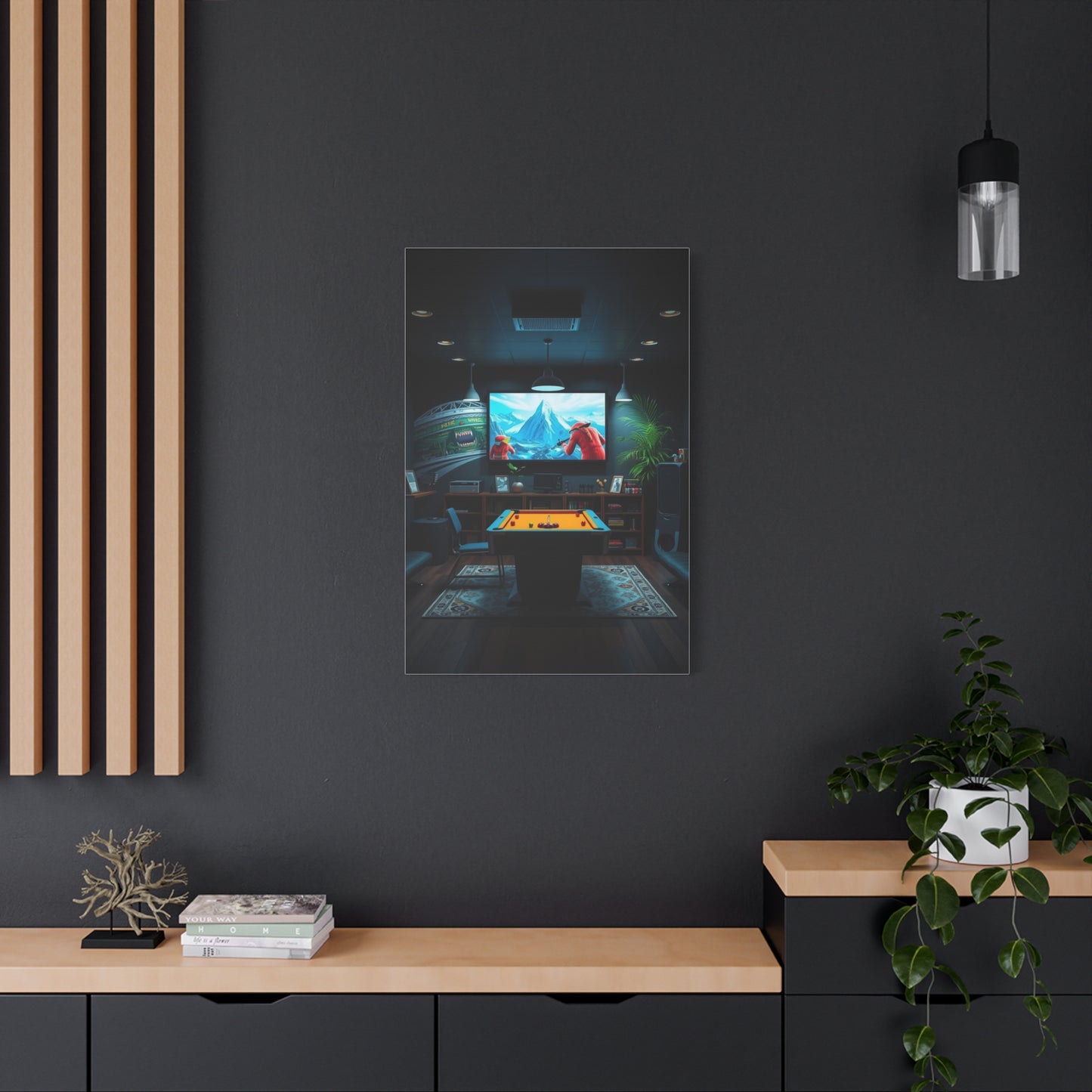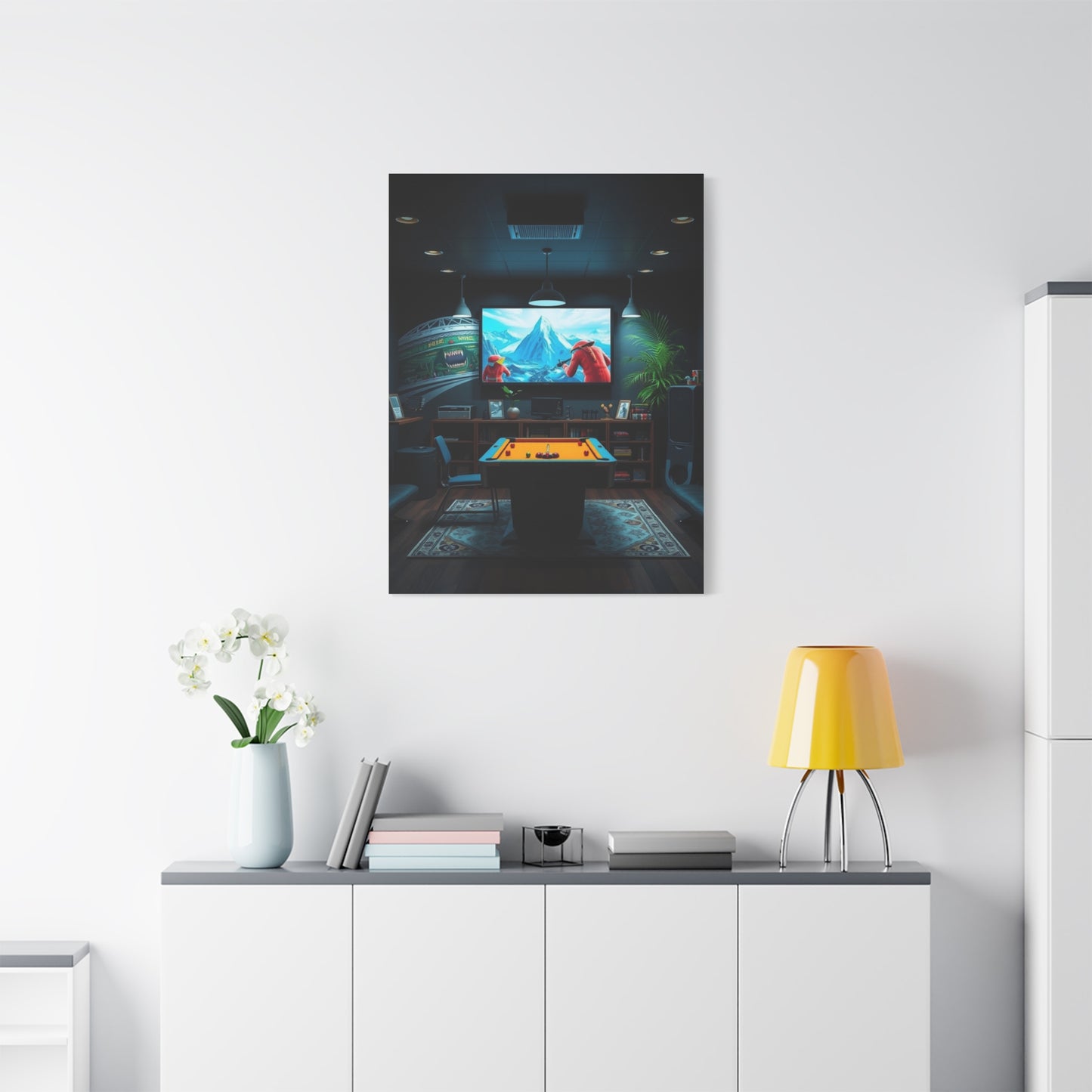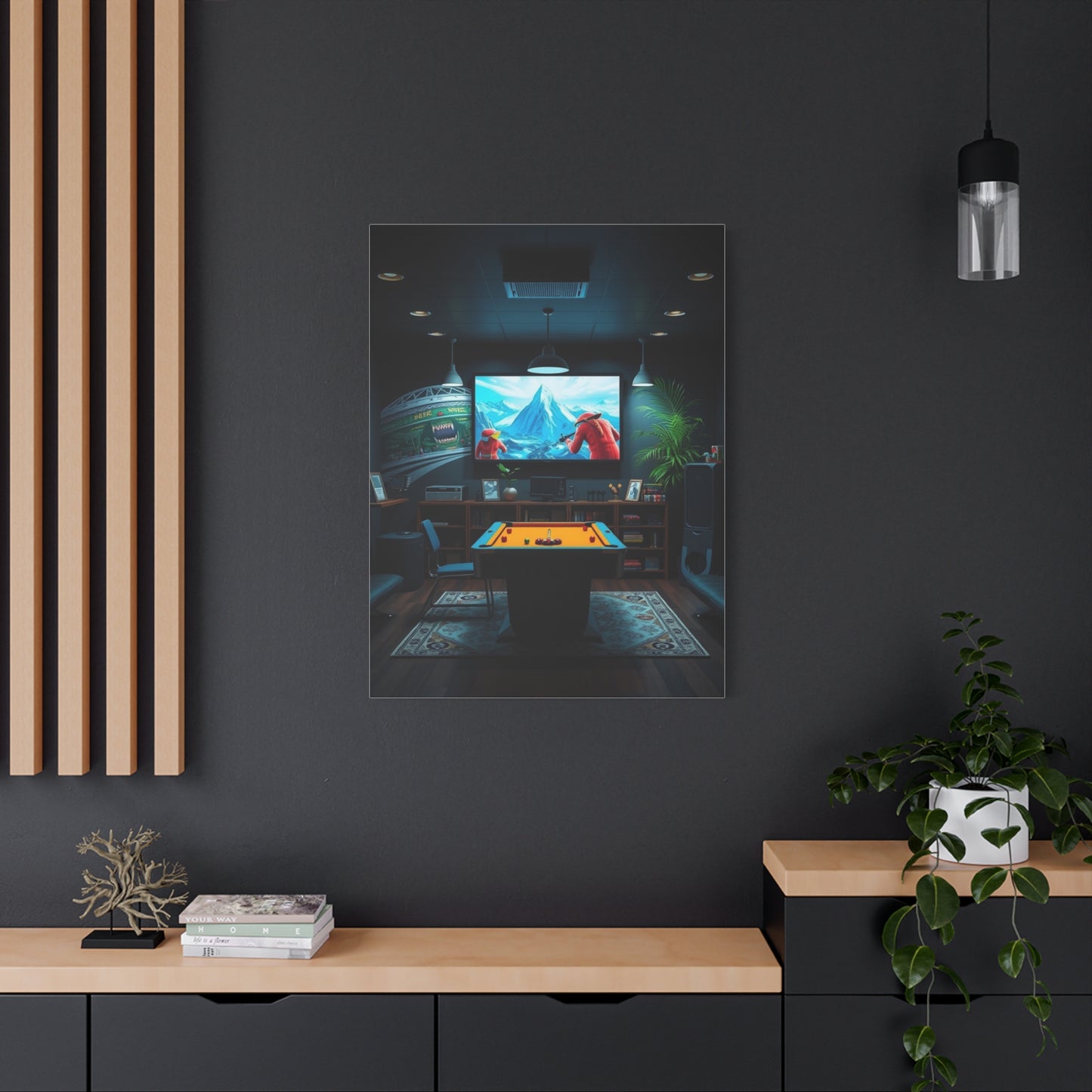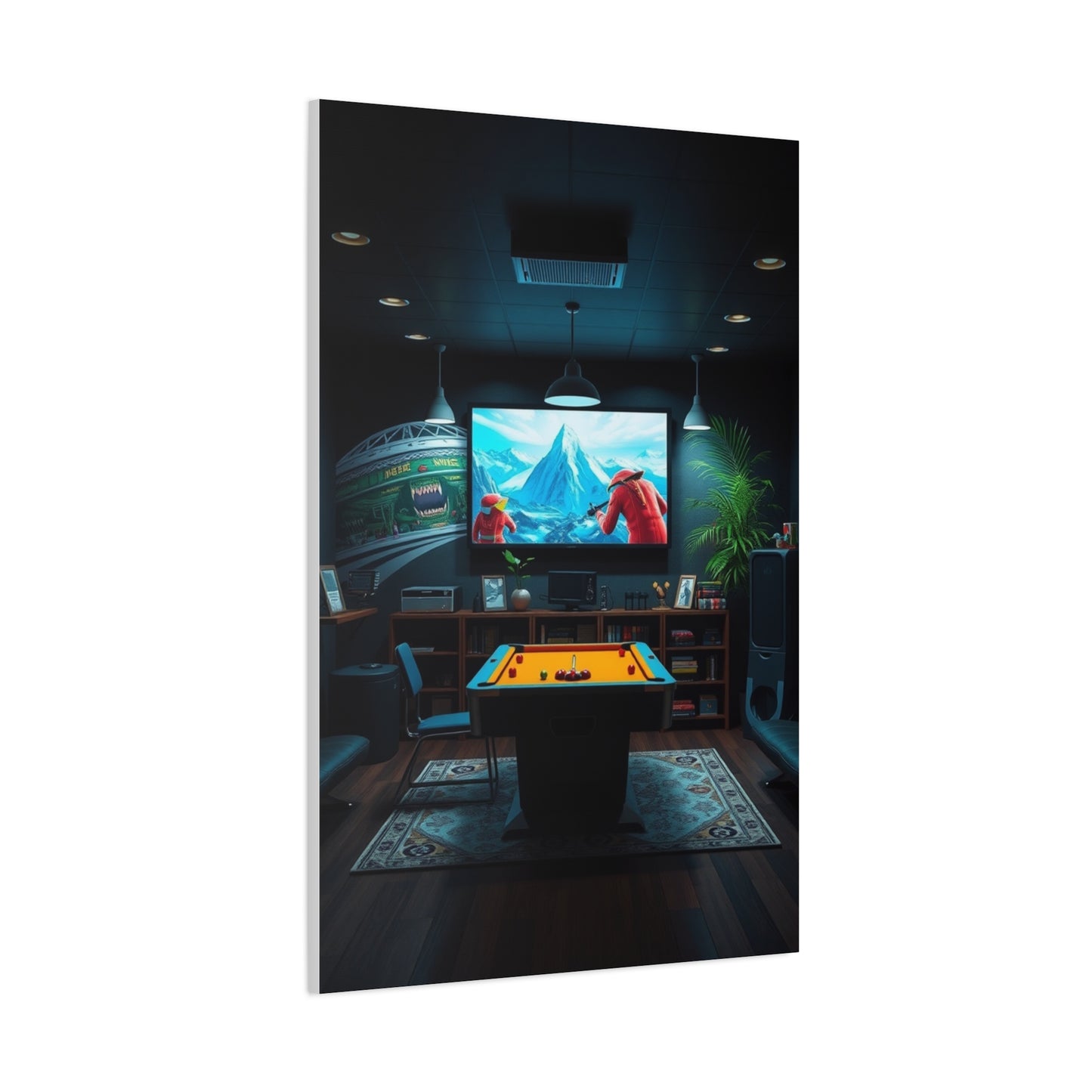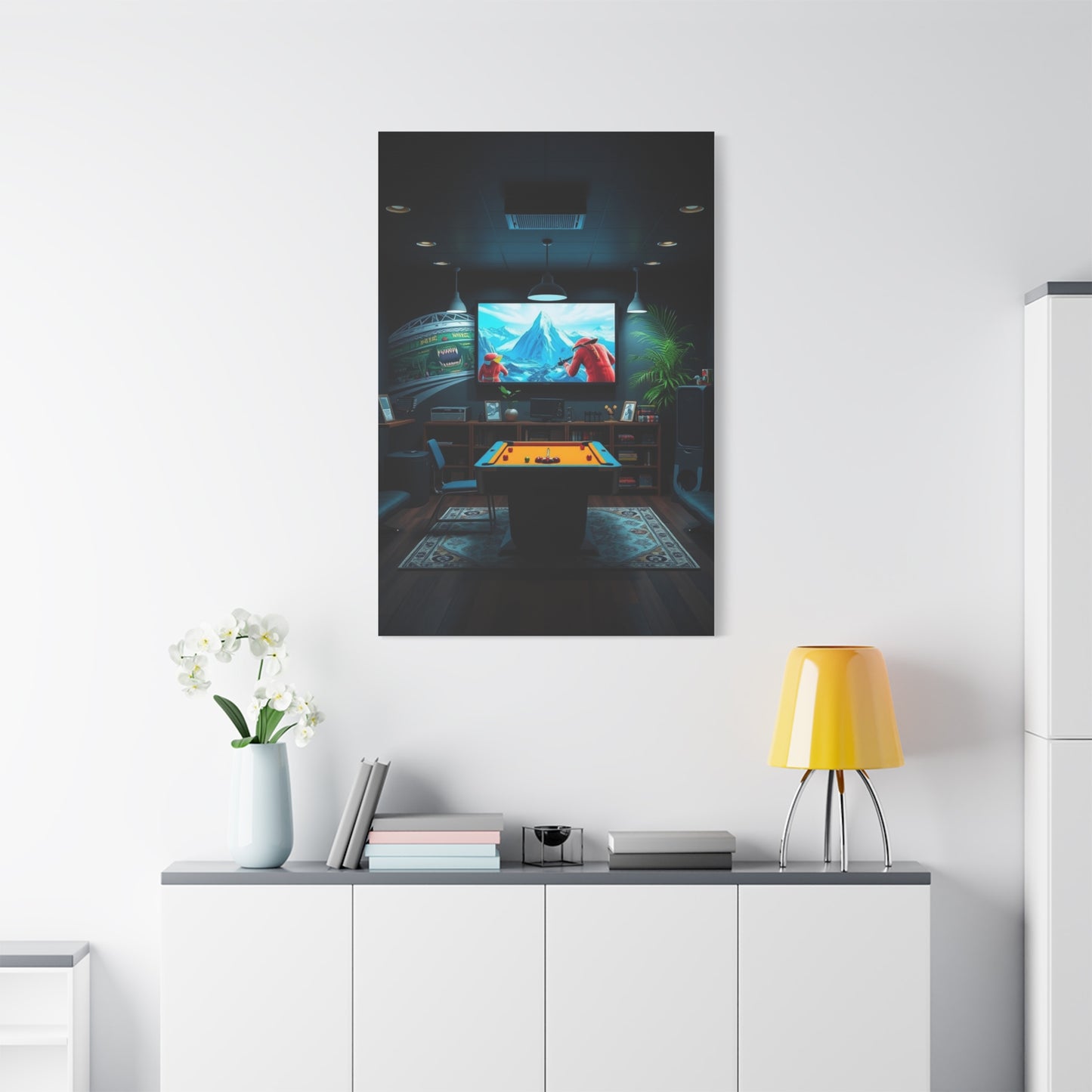The Art of Relaxation: Refined Recreation in Wall Masterpieces
The evolution of wall art has transformed dramatically over the past decades, moving from simple decorative elements to sophisticated masterpieces that define the character and atmosphere of contemporary homes. Today's discerning homeowners seek more than mere decoration; they desire artistic expressions that reflect their refined tastes and create environments conducive to creative recreation and inspired living.
Modern wall art encompasses an extraordinary range of styles, mediums, and artistic approaches that cater to diverse aesthetic preferences while maintaining the highest standards of craftsmanship and visual appeal. From abstract compositions that challenge conventional perspectives to realistic portrayals that capture life's most beautiful moments, contemporary wall art offers endless possibilities for personalizing living environments.
The significance of carefully curated wall art extends beyond aesthetic appeal, influencing mood, productivity, and overall well-being within residential and commercial environments. Research consistently demonstrates that thoughtfully selected artistic pieces can enhance cognitive function, reduce stress levels, and inspire creativity among inhabitants. This understanding has elevated wall art from decorative afterthought to essential component of thoughtful environmental design.
Contemporary artists continue pushing boundaries, experimenting with innovative materials, techniques, and conceptual approaches that result in truly exceptional wall art pieces. Digital technologies have opened new avenues for artistic expression, enabling creators to develop hybrid works that combine traditional craftsmanship with cutting-edge digital manipulation and printing techniques.
The democratization of art through various online platforms and galleries has made exceptional wall art more accessible to broader audiences, allowing art enthusiasts to discover and acquire pieces that perfectly complement their personal aesthetic vision. This accessibility has fostered a new generation of art collectors who appreciate quality craftsmanship and artistic innovation.
Museums and galleries worldwide continue showcasing revolutionary wall art exhibitions that influence residential decoration trends and inspire homeowners to invest in pieces that transcend temporary fashion cycles. These exhibitions demonstrate how wall art can serve as focal points that anchor entire design schemes while providing endless visual interest and conversation starters.
The investment potential of carefully selected wall art pieces has attracted attention from both aesthetic enthusiasts and financial advisors who recognize art's potential for appreciation over time. Limited edition prints, original paintings, and sculptures from emerging artists often represent both aesthetic and financial opportunities for savvy collectors.
Exploring Diverse Artistic Mediums and Techniques
The contemporary wall art landscape encompasses an remarkable diversity of mediums, each offering unique characteristics and aesthetic possibilities that appeal to different sensibilities and design requirements. Traditional oil paintings continue commanding respect and admiration for their rich textures, luminous colors, and timeless appeal that transcends fleeting design trends.
Watercolor compositions bring delicate transparency and ethereal beauty to wall displays, creating atmospheric effects that can transform ordinary rooms into extraordinary environments. The unpredictable nature of watercolor medium produces organic flowing effects that cannot be replicated through other artistic techniques, making each piece genuinely unique.
Acrylic paintings offer vibrant color saturation and versatility that appeals to contemporary tastes while providing durability and longevity that ensures artwork maintains its visual impact for decades. Modern acrylic formulations enable artists to achieve effects ranging from photorealistic detail to bold abstract expressions.
Mixed media artwork combines multiple materials and techniques to create complex, layered compositions that engage viewers on multiple sensory levels. These innovative pieces often incorporate unconventional materials such as fabric, metal, wood, or recycled objects, resulting in three-dimensional wall installations that challenge traditional artistic boundaries.
Photography as wall art has evolved significantly, with contemporary photographers producing large-format prints that rival traditional paintings in their visual impact and emotional resonance. Advanced printing technologies enable photographers to create gallery-quality reproductions that capture every nuance of color, texture, and detail.
Digital art represents the newest frontier in wall art creation, with artists using sophisticated software and printing technologies to produce works that were impossible to create through traditional means. These pieces often incorporate interactive elements or changing displays that evolve over time, adding dynamic interest to static wall installations.
Sculptural wall art adds dimensional interest and tactile appeal to flat surfaces, creating dramatic shadows and visual depth that changes throughout the day as lighting conditions shift. These pieces often serve as architectural elements that enhance rather than merely decorate their surrounding environments.
Textile art brings warmth, texture, and cultural richness to wall displays through techniques such as weaving, embroidery, and fabric collage. Contemporary textile artists create sophisticated compositions that challenge traditional distinctions between fine art and craft.
Color Theory and Psychological Impact in Wall Art Selection
Understanding color theory principles is essential for selecting wall art that creates desired emotional responses and enhances overall environmental harmony. Colors possess inherent psychological properties that influence mood, energy levels, and cognitive function, making color selection a crucial consideration in wall art curation.
Warm colors including reds, oranges, and yellows generate feelings of energy, enthusiasm, and warmth while creating inviting, stimulating environments that encourage social interaction and creative activities. These colors work particularly well in entertainment areas, dining rooms, and creative studios where active engagement is desired.
Cool colors such as blues, greens, and purples promote tranquility, contemplation, and relaxation while creating serene environments conducive to rest and reflection. These colors are ideal for bedrooms, meditation areas, and home offices where calm focus is important.
Neutral colors including grays, beiges, and earth tones provide versatile backgrounds that complement virtually any design scheme while allowing other elements to take visual prominence. Neutral-toned wall art offers timeless appeal that adapts to changing decor without requiring replacement.
Monochromatic color schemes using various shades and tints of single colors create sophisticated, cohesive looks that demonstrate refined aesthetic sensibility. These approaches work particularly well in contemporary and minimalist design schemes where visual harmony is paramount.
Complementary color combinations using opposite colors on the color wheel create dynamic, vibrant displays that generate visual excitement and energy. These bold approaches require careful balancing to avoid overwhelming environments while maintaining their energizing effects.
Analogous color schemes using adjacent colors on the color wheel produce harmonious, flowing compositions that create peaceful, unified environments. These subtle approaches work well in residential settings where comfort and relaxation are priorities.
The intensity and saturation of colors significantly impact their psychological effects, with highly saturated colors creating more dramatic responses than their muted counterparts. Understanding these relationships enables informed decisions about appropriate color intensities for different environmental contexts.
Lighting conditions dramatically affect color perception and should be considered when selecting wall art for specific locations. Natural daylight, warm artificial lighting, and cool fluorescent lighting all alter color appearance and emotional impact.
Scaling and Proportion Guidelines for Optimal Visual Impact
Proper scaling and proportion are fundamental considerations that determine wall art's visual success within any given environment. Understanding these principles enables selection of pieces that enhance rather than overwhelm their surroundings while creating appropriate focal points and visual balance.
Large-scale artwork commands attention and creates dramatic focal points that can anchor entire room designs while providing powerful visual statements that reflect owner's personality and aesthetic preferences. These pieces work best in rooms with adequate wall space and viewing distances that allow proper appreciation of artistic details.
Medium-scale pieces offer versatility and can be used individually as modest focal points or grouped together to create larger compositional arrangements. These pieces adapt well to various room sizes and furniture arrangements while providing flexibility for future rearrangement or expansion.
Small-scale artwork enables creation of intimate vignettes and detailed viewing experiences that reward close examination. These pieces work well in hallways, powder rooms, and other locations where viewers can approach closely enough to appreciate fine details and craftsmanship.
Gallery wall arrangements combine multiple pieces of varying sizes to create dynamic, visually interesting displays that can fill large wall areas while maintaining individual piece integrity. These arrangements require careful planning to achieve proper balance and visual flow.
The two-thirds rule suggests that artwork should occupy approximately two-thirds of the wall space above furniture pieces to create pleasing proportional relationships. This guideline helps ensure that artwork appears neither too small nor too large for its intended location.
Ceiling height considerations affect optimal artwork sizes, with higher ceilings accommodating larger pieces while lower ceilings require more modest scales to avoid overwhelming compact environments. Proper proportion maintains comfortable visual relationships between architectural elements and artistic additions.
Viewing distance calculations help determine appropriate artwork sizes for specific installation locations. Pieces intended for close viewing can incorporate fine details while those viewed from greater distances require bolder, more simplified compositions to maintain visual impact.
Multiple piece installations require careful attention to spacing relationships, with gaps between pieces typically measuring one-quarter to one-half the width of individual artworks. This spacing allows each piece to maintain its identity while contributing to overall compositional unity.
Lighting Strategies to Enhance Artistic Presentations
Proper lighting transforms wall art from simple decoration into captivating focal points that command attention and enhance overall environmental ambiance. Understanding various lighting approaches enables optimal presentation of artistic investments while creating dramatic visual effects that change throughout different times of day.
Picture lighting systems designed specifically for artwork illumination provide focused, adjustable lighting that highlights artistic details while minimizing harmful UV exposure that can cause fading and deterioration over time. These systems offer professional-quality presentation suitable for valuable or particularly cherished pieces.
Track lighting systems offer flexibility for illuminating multiple wall art pieces or changing displays over time. Adjustable fixtures can be repositioned and redirected as artwork arrangements evolve, providing long-term adaptability for growing art collections.
Recessed downlights create clean, architectural lighting solutions that integrate seamlessly with contemporary design schemes while providing excellent artwork illumination. Proper positioning and beam angle selection ensure even light distribution without creating unwanted shadows or glare.
Natural lighting considerations include understanding how daylight changes throughout the day and seasons, affecting artwork appearance and requiring supplemental artificial lighting for consistent presentation. Window treatments may be necessary to control excessive brightness and UV exposure.
LED lighting technologies offer energy efficiency, longevity, and superior color rendering that accurately displays artwork colors without the heat generation associated with traditional incandescent bulbs. These systems provide consistent, high-quality illumination while minimizing maintenance requirements.
Accent lighting creates dramatic effects that transform wall art into evening focal points while contributing to overall ambient lighting schemes. These approaches work particularly well in entertainment areas where artwork serves as conversation pieces during social gatherings.
Color temperature selection affects artwork appearance, with warmer temperatures enhancing earth tones and creating cozy atmospheres while cooler temperatures better display blues and greens while creating more energetic environments.
Dimmer controls enable adjustment of lighting intensity for different activities and moods, allowing artwork to serve various functional and aesthetic roles throughout daily routines. These systems provide flexibility without requiring multiple lighting installations.
Curatorial Approaches for Personal Art Collections
Developing a personal art collection requires thoughtful curation strategies that balance aesthetic preferences with practical considerations such as available space, budget constraints, and long-term collecting goals. Successful collectors develop clear vision statements that guide acquisition decisions while remaining open to unexpected discoveries and evolving tastes.
Thematic collecting focuses on specific subjects, styles, or artistic movements, creating coherent collections that demonstrate deep appreciation for particular aesthetic approaches. These collections often become more valuable over time as individual pieces reinforce and complement each other while telling comprehensive artistic stories.
Artist-focused collecting involves acquiring multiple works from individual artists, allowing deeper appreciation of artistic development and stylistic evolution over time. These collections often reveal nuances and connections that single pieces cannot communicate while building relationships with living artists.
Medium-specific collecting concentrates on particular artistic techniques or materials, developing expertise in specific areas while creating opportunities to compare different artists' approaches to similar challenges. These collections often become educational resources that enhance understanding of artistic processes.
Period-focused collecting explores specific historical eras or artistic movements, creating windows into past aesthetic sensibilities while providing contemporary relevance through careful contextual presentation. These approaches often require significant research and historical understanding.
Budget-conscious collecting strategies enable art acquisition across various price points while maintaining quality standards and aesthetic coherence. These approaches often discover emerging artists before broader recognition drives prices higher.
Investment considerations balance aesthetic appreciation with financial returns, requiring understanding of art market dynamics while avoiding purely speculative approaches that may compromise aesthetic satisfaction. Successful investment collecting requires long-term perspectives and market knowledge.
Documentation and cataloging systems preserve collection information including provenance, condition reports, and insurance valuations while providing resources for future research and appreciation. These systems protect investments while enhancing collection management.
Conservation and preservation strategies ensure artwork longevity while maintaining aesthetic and financial value over time. Understanding proper handling, storage, and display techniques protects investments while enabling continued enjoyment.
Contemporary Artistic Movements and Their Wall Art Applications
Contemporary artistic movements continue evolving and influencing wall art creation, offering fresh perspectives and innovative approaches that challenge traditional aesthetic boundaries while providing new opportunities for personal expression and environmental enhancement.
Abstract expressionism remains influential in contemporary wall art, emphasizing emotional expression and gestural mark-making that creates powerful visual impacts without relying on representational imagery. These approaches work particularly well in modern and contemporary environments where bold artistic statements are desired.
Minimalism's influence appears in clean, simplified compositions that emphasize essential elements while eliminating unnecessary details. These approaches complement contemporary architecture and design while providing calm, meditative focal points that enhance rather than compete with surrounding elements.
Pop art's legacy continues through contemporary artists who reference popular culture, consumer imagery, and mass media while commenting on contemporary society. These pieces often incorporate familiar imagery in unexpected contexts, creating conversation pieces that engage viewers on multiple levels.
Photorealism challenges traditional distinctions between photography and painting while demonstrating extraordinary technical skill and attention to detail. These pieces often create striking visual effects that reward close examination while providing impressive demonstrations of artistic capability.
Street art influences appear in contemporary wall art through bold graphics, urban aesthetics, and social commentary that brings gallery-quality execution to previously underground artistic approaches. These pieces often appeal to younger collectors while bridging fine art and popular culture.
Digital art movements explore new technologies and interactive possibilities while challenging traditional medium boundaries. These approaches often incorporate changing displays, responsive elements, or augmented reality features that evolve over time.
Environmental art addresses ecological concerns and sustainability issues while using recycled materials and earth-friendly processes. These approaches appeal to environmentally conscious collectors while demonstrating artistic commitment to planetary stewardship.
Conceptual art emphasizes ideas and meanings over traditional aesthetic concerns, creating pieces that engage viewers intellectually while challenging conventional expectations about artistic purpose and value.
Regional and Cultural Influences on Wall Art Preferences
Geographic location and cultural background significantly influence wall art preferences, creating distinct regional aesthetic sensibilities that reflect local traditions, climate conditions, and social values while providing opportunities to explore diverse artistic expressions from around the world.
Mediterranean influences emphasize warm colors, natural materials, and outdoor scenes that reflect the region's climate and lifestyle while creating relaxing, vacation-like atmospheres in residential settings. These approaches work particularly well in casual, family-oriented environments.
Scandinavian aesthetics prioritize simplicity, functionality, and natural materials while incorporating subtle colors and clean lines that reflect the region's design traditions. These approaches complement contemporary architecture while creating serene, uncluttered environments.
Asian influences include calligraphy, nature imagery, and philosophical concepts that emphasize harmony, balance, and spiritual contemplation. These approaches often incorporate symbolic elements that add deeper meaning to artistic presentations.
African art traditions contribute bold patterns, vibrant colors, and cultural symbols that celebrate heritage while adding energy and warmth to contemporary environments. These pieces often serve as cultural bridges that honor artistic traditions while adapting to modern contexts.
Native American influences include nature reverence, spiritual symbols, and traditional crafts that connect contemporary viewers with ancient wisdom and artistic traditions. These pieces often incorporate natural materials and earth-based color palettes.
Latin American aesthetics embrace bold colors, dynamic compositions, and cultural celebrations that add excitement and energy to residential environments. These approaches often incorporate festive elements that enhance social atmospheres.
European influences range from classical traditions to contemporary innovations, offering sophisticated approaches that demonstrate artistic heritage while adapting to modern sensibilities. These pieces often emphasize technical excellence and cultural refinement.
Contemporary fusion approaches combine influences from multiple cultures and traditions, creating unique artistic expressions that reflect increasingly global perspectives while honoring diverse aesthetic traditions.
Technology Integration in Modern Wall Art Solutions
Technology integration has revolutionized wall art possibilities, enabling innovative approaches that combine traditional artistic skills with cutting-edge digital capabilities while creating dynamic, interactive experiences that evolve over time and respond to environmental conditions.
Digital displays enable rotating artwork collections without physical changes, allowing exploration of vast artistic libraries while adapting presentations to different moods, seasons, or occasions. These systems often incorporate high-resolution screens that rival traditional print quality while offering unlimited variety.
Augmented reality applications overlay digital information onto physical artworks, providing additional context, interactive elements, or changing displays that enhance viewing experiences. These technologies often reveal hidden layers of meaning while engaging viewers in novel ways.
Smart lighting systems automatically adjust illumination based on time of day, ambient conditions, or viewer preferences while protecting artworks from harmful UV exposure. These systems often incorporate sensors and programmable controls that optimize presentation without manual intervention.
Interactive sensors respond to viewer presence, movement, or gestures while triggering changes in artwork appearance or accompanying audio elements. These systems create engaging experiences that transform passive viewing into active participation.
Projection mapping techniques transform ordinary walls into dynamic canvases that can display any imagery while adapting to architectural features and creating immersive environmental experiences. These approaches offer unlimited creative possibilities without permanent installations.
Digital printing technologies enable reproduction of artwork at various scales and on diverse materials while maintaining exceptional quality and color accuracy. These capabilities democratize access to famous artworks while enabling custom sizing for specific applications.
Virtual reality systems enable exploration of artistic environments and gallery experiences from home while providing educational context and interactive features impossible in traditional settings. These technologies expand access to global art collections while creating novel viewing experiences.
Mobile applications connect viewers with artwork information, artist biographies, and related content while enabling collection management and social sharing features. These tools enhance appreciation while building communities around shared artistic interests.
Seasonal Adaptations and Rotating Display Strategies
Seasonal artwork rotation keeps wall displays fresh and engaging while allowing exploration of different moods, themes, and artistic styles throughout the year. These strategies maximize enjoyment of art collections while adapting environments to changing seasons and personal preferences.
Spring rotations often emphasize renewal themes, fresh colors, and nature imagery that reflect the season's optimistic energy while complementing increased natural lighting and outdoor activity. These changes create psychological connections with seasonal cycles while refreshing indoor environments.
Summer displays frequently incorporate bright colors, outdoor scenes, and vacation imagery that capture the season's relaxed, energetic atmosphere while complementing increased social activity and casual lifestyles. These approaches often emphasize lightness and freedom from formal constraints.
Autumn rotations typically feature warmer colors, harvest themes, and contemplative imagery that reflect the season's introspective qualities while complementing reduced daylight and indoor focus. These changes often emphasize comfort and preparation for quieter winter months.
Winter displays commonly emphasize cozy themes, dramatic contrasts, and intimate imagery that create warmth during cold months while compensating for reduced natural lighting. These approaches often incorporate elements that suggest warmth and comfort during challenging weather.
Holiday rotations celebrate special occasions and cultural traditions while maintaining aesthetic quality and avoiding temporary decorative approaches that may appear cheap or disposable. These changes honor important events while preserving sophisticated environmental standards.
Storage solutions enable safe keeping of rotated artworks while protecting investments and maintaining organization for efficient seasonal changes. These systems often incorporate climate control and protective materials that preserve artwork condition during storage periods.
Documentation systems track rotation schedules, artwork locations, and condition information while ensuring efficient management of changing displays. These approaches prevent confusion while optimizing collection utilization and enjoyment.
Planning strategies coordinate seasonal changes with other environmental modifications such as textile changes, lighting adjustments, and furniture rearrangements while maintaining overall design coherence and aesthetic satisfaction.
Investment Considerations and Art Market Dynamics
Understanding art market dynamics enables informed investment decisions while balancing aesthetic satisfaction with financial considerations. Successful art investment requires knowledge of market trends, artist careers, and economic factors that influence artwork values over time.
Emerging artist identification requires research into educational backgrounds, exhibition histories, and critical recognition while assessing artistic potential and market positioning. These investigations often reveal opportunities for acquisition before broader recognition drives prices higher.
Established artist markets provide stability and proven track records while offering opportunities to acquire quality works from recognized talents. These markets often demonstrate consistent value appreciation while providing confidence in long-term investment potential.
Limited edition considerations include understanding production numbers, artist signatures, and authentication procedures while evaluating exclusivity and future availability. These factors significantly influence both aesthetic appeal and investment potential over time.
Condition assessment requires understanding conservation needs, structural integrity, and potential restoration costs while evaluating overall artwork viability. Professional appraisals often reveal hidden issues that may affect both aesthetic enjoyment and financial value.
Provenance documentation establishes ownership history and authenticity while providing crucial information for insurance and resale purposes. Complete provenance records significantly enhance artwork value while protecting against fraud and legal complications.
Market timing considerations include understanding economic cycles, collecting trends, and cultural influences that affect artwork demand and pricing. Strategic acquisition timing can significantly impact both immediate satisfaction and long-term returns.
Insurance and protection strategies safeguard investments while ensuring continued enjoyment without financial anxiety. Proper coverage protects against theft, damage, and loss while enabling confident display and sharing with others.
Professional consultation services provide expert guidance for major acquisitions while offering specialized knowledge that individual collectors may lack. These services often prevent costly mistakes while identifying exceptional opportunities.
Environmental Considerations and Sustainable Art Practices
Environmental consciousness increasingly influences art selection and display practices, with many collectors prioritizing sustainable materials, eco-friendly production methods, and artists who demonstrate commitment to planetary stewardship through their work and business practices.
Sustainable material usage includes artwork created from recycled content, renewable resources, and non-toxic processes while avoiding materials that contribute to environmental degradation. These considerations often reveal innovative artistic approaches while supporting responsible production practices.
Local artist support reduces transportation environmental impacts while strengthening community cultural ecosystems and providing opportunities for direct artist relationships. These approaches often discover unique regional talent while minimizing carbon footprints associated with artwork acquisition.
Digital alternatives reduce physical production impacts while offering unlimited reproduction possibilities and eliminating shipping requirements. These approaches often provide access to global artistic content while minimizing environmental costs associated with traditional artwork distribution.
Conservation practices extend artwork lifespans while reducing replacement needs and associated environmental impacts. Proper care often maintains aesthetic and financial value while minimizing resource consumption over time.
Packaging and shipping considerations include using recyclable materials and consolidated shipments while minimizing protective packaging waste. These practices reduce environmental impacts while maintaining artwork safety during transportation.
Gallery and exhibition practices increasingly emphasize sustainable operations including energy-efficient lighting, recycled materials, and waste reduction programs. Supporting environmentally conscious venues reinforces personal values while encouraging industry-wide environmental improvements.
Artist social responsibility includes supporting creators who demonstrate commitment to environmental causes, community engagement, and ethical business practices. These considerations often reveal artists whose values align with collector priorities while supporting positive social impacts.
Disposal and recycling strategies address end-of-life considerations for artwork that no longer serves aesthetic or investment purposes while minimizing waste and environmental impact. These approaches often include donation opportunities that benefit communities while avoiding landfill disposal.
Health and Wellness Benefits of Curated Art Environments
Scientific research consistently demonstrates that thoughtfully curated art environments provide significant health and wellness benefits, influencing everything from stress levels and cognitive function to recovery times and overall life satisfaction.
Stress reduction occurs through exposure to calming imagery, harmonious color schemes, and artistic beauty that activates relaxation responses while providing mental respite from daily pressures. These effects often accumulate over time, creating increasingly beneficial environmental impacts.
Cognitive stimulation results from engaging with complex artistic compositions that challenge perception and encourage contemplation while maintaining interest over extended periods. These mental exercises often contribute to improved cognitive function and mental acuity.
Emotional regulation benefits from exposure to artwork that resonates with personal experiences and provides outlets for processing feelings and experiences. Art often serves as emotional mirrors that help viewers understand and integrate complex psychological states.
Creativity enhancement occurs through regular exposure to innovative artistic approaches and imaginative solutions to visual problems. Artistic environments often inspire creative thinking that extends beyond aesthetic appreciation into professional and personal problem-solving.
Social connection opportunities arise through shared aesthetic experiences and conversation starters that artwork provides during gatherings and visits. Art often serves as cultural bridges that facilitate meaningful interactions and relationship building.
Healing environments incorporate artistic elements that support recovery and well-being while providing positive distractions and hopeful imagery. Healthcare facilities increasingly recognize art's therapeutic potential while creating more humane healing environments.
Mindfulness practice benefits from contemplating artistic details and engaging in present-moment awareness that art appreciation naturally encourages. These practices often contribute to overall mental health and emotional stability.
Quality of life improvements result from living in beautiful, inspiring environments that reflect personal values and aesthetic preferences. Artistic surroundings often contribute to overall life satisfaction while providing daily sources of pleasure and inspiration.
Professional Installation and Maintenance Strategies
Professional installation ensures optimal artwork presentation while protecting investments and ensuring safety for both artwork and inhabitants. Understanding installation principles enables informed decisions about when professional services provide value beyond DIY approaches.
Wall preparation requirements include assessing structural integrity, surface conditions, and environmental factors that affect installation success. Professional evaluation often reveals issues that could compromise artwork safety while ensuring proper mounting system selection.
Mounting hardware selection depends on artwork weight, wall construction, and security requirements while ensuring adequate support and stability. Professional installers often have access to specialized hardware and techniques unavailable to general consumers.
Leveling and positioning techniques ensure optimal visual presentation while accounting for architectural irregularities and viewing angle considerations. Professional precision often makes significant differences in final aesthetic impact.
Security considerations include protection against theft, vandalism, and accidental damage while maintaining accessibility for cleaning and maintenance. Professional systems often incorporate discrete security features that provide protection without compromising aesthetics.
Climate control requirements protect artwork from temperature fluctuations, humidity changes, and air quality issues that can cause damage over time. Professional assessment often identifies environmental risks while recommending protective measures.
Maintenance scheduling includes regular cleaning, condition monitoring, and preventive care that preserves artwork appearance and value. Professional maintenance services often prevent problems while ensuring optimal long-term preservation.
Insurance considerations include understanding coverage requirements and documentation needs while ensuring adequate protection for displayed artwork. Professional installation often meets insurance requirements while providing documentation for claims processes.
Conservation consultation provides expert guidance for valuable or particularly vulnerable artworks while ensuring appropriate care and handling. Professional conservators offer specialized knowledge that protects investments while extending artwork lifespans.
Creating Cohesive Design Narratives Through Art Selection
Successful wall art curation creates coherent visual narratives that enhance environmental design while reflecting personal aesthetic preferences and lifestyle priorities. Understanding design principles enables selection of artwork that contributes to unified, sophisticated environmental schemes.
Color palette coordination ensures artwork selections complement existing environmental elements while creating harmonious overall compositions. Consistent color relationships often make environments appear more sophisticated while demonstrating refined aesthetic sensibility.
Style consistency maintains visual coherence while allowing individual piece personality to emerge within unified presentations. Balanced approaches often combine related styles while avoiding jarring contrasts that compromise overall environmental harmony.
Thematic development creates meaningful connections between artwork selections while building comprehensive aesthetic stories that reward continued contemplation. These approaches often reveal deeper meanings while providing intellectual engagement beyond surface beauty.
Scale progression establishes visual rhythms and hierarchies that guide viewer attention while creating dynamic yet balanced compositions. Thoughtful scaling often makes environments appear more spacious while maintaining intimate viewing opportunities.
Material coordination combines various artistic mediums and techniques while maintaining overall environmental harmony. Diverse materials often add textural interest while avoiding overwhelming variety that compromises design coherence.
Focal point creation establishes primary visual attractions that anchor design schemes while providing reference points for other environmental elements. Strategic focal points often organize entire room compositions while commanding appropriate attention.
Supporting element integration ensures artwork selections enhance rather than compete with architectural features, furniture, and other environmental components. Successful integration often makes environments appear effortlessly coordinated while avoiding obvious designer manipulation.
Cultural narrative development incorporates personal history, travel experiences, and meaningful references while creating environments that reflect individual stories and values. Personal narratives often make environments more meaningful while providing conversation opportunities and emotional connections.
Conclusion
The world of sophisticated wall art masterpieces offers endless opportunities for creating inspired environments that nurture creativity, enhance well-being, and reflect refined aesthetic sensibilities. Through thoughtful curation, proper installation, and ongoing appreciation, wall art transforms ordinary environments into extraordinary havens that celebrate human creativity while providing daily sources of inspiration and joy.
Understanding the diverse mediums, styles, and approaches available enables informed selections that serve both aesthetic and practical purposes while building valuable collections that may appreciate over time. From traditional paintings and contemporary digital installations to sculptural elements and interactive technologies, modern wall art encompasses unprecedented variety and innovation.
The psychological and health benefits of curated art environments extend far beyond simple decoration, influencing mood, creativity, and overall quality of life in measurable ways. Research continues demonstrating art's positive impacts on human well-being, making thoughtful art selection an investment in personal and family health as well as aesthetic satisfaction.
Environmental considerations increasingly influence art selection and display practices, with sustainable materials, local artist support, and eco-friendly production methods becoming important factors in collection development. These considerations often reveal innovative artists and approaches while aligning aesthetic choices with environmental values.
Technology integration opens new possibilities for dynamic, interactive art experiences that evolve over time while maintaining the emotional resonance and aesthetic impact that traditional artwork provides. Digital innovations complement rather than replace traditional artistic mediums, expanding creative possibilities while preserving time-honored aesthetic principles.
Professional guidance in installation, maintenance, and collection development often proves invaluable for protecting investments while maximizing aesthetic impact. Understanding when to seek expert assistance enables confident decision-making while avoiding costly mistakes that could compromise both artwork safety and environmental design success.
The art market's complexity requires careful research and consideration when making significant acquisitions, but the rewards of building meaningful collections extend beyond financial considerations to encompass personal satisfaction, cultural contribution, and legacy building. Successful collecting balances aesthetic preferences with practical considerations while remaining open to discovery and growth.
Seasonal rotation strategies keep art environments fresh and engaging while maximizing collection utilization and providing opportunities to explore different moods and themes throughout the year. These approaches often reveal new appreciation for familiar pieces while maintaining environmental interest and excitement.
Cultural and regional influences provide rich sources of inspiration while connecting contemporary living with artistic traditions from around the world. Understanding these influences enables more informed selections while broadening aesthetic horizons and cultural appreciation.
The future of wall art continues evolving through technological innovation, cultural exchange, and environmental awareness while maintaining the fundamental human need for beauty, meaning, and creative expression in daily life. Embracing these developments while honoring traditional artistic values creates opportunities for building collections that serve current needs while adapting to future possibilities.
Ultimately, sophisticated wall art selection represents an investment in quality of life that pays dividends in daily pleasure, creative inspiration, and environmental enhancement. Through careful curation and thoughtful presentation, wall art masterpieces transform living and working environments into galleries that celebrate human creativity while providing personal sanctuaries for reflection, inspiration, and refined recreation.

















